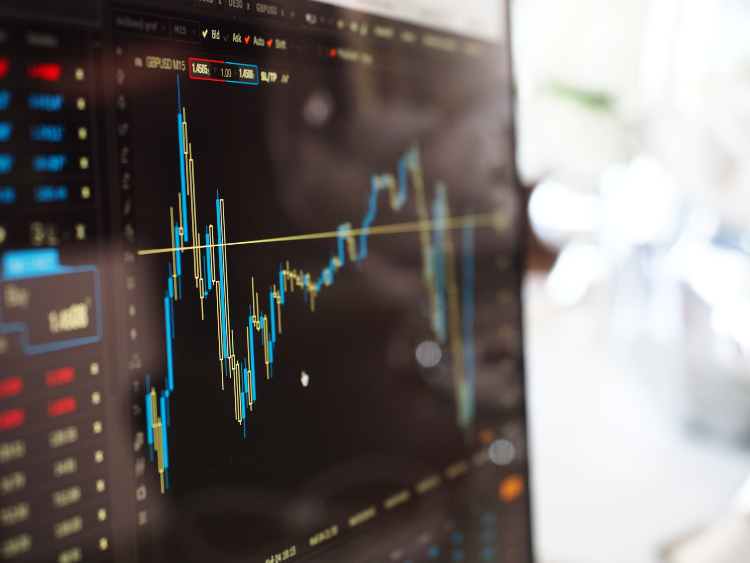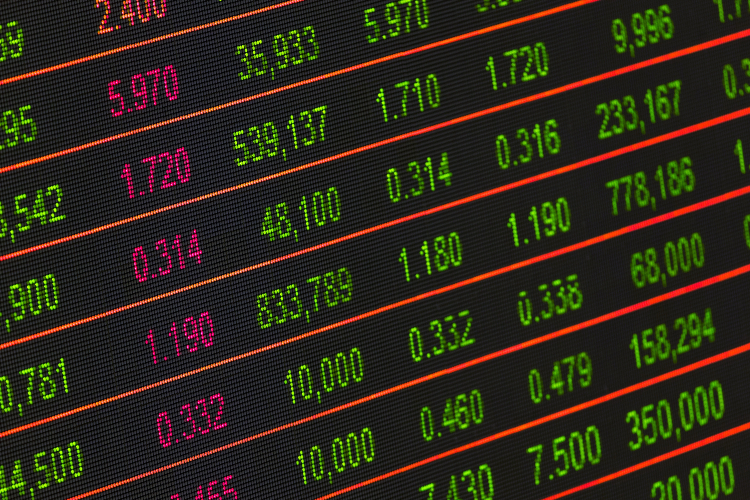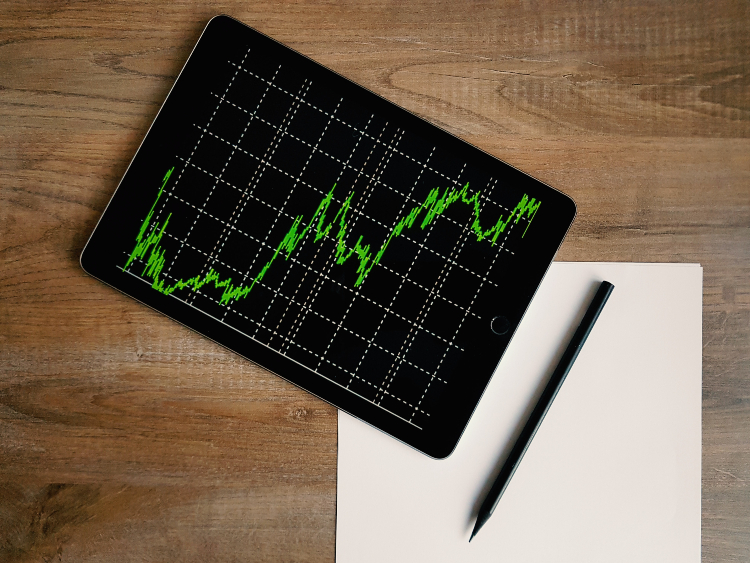High-frequency trading (HFT) is a method of automated investing that uses algorithms to act upon pre-set indicators, signals, and trends. It’s commonly used by big investment banks and market players who combine large order volumes with rapid executions. Read on for the best HFT brokers and how to get started.
This article will guide you through what high-frequency trading is today, where it may go in the future, and its potential benefits and disadvantages. It will also explain the key strategies employed by high-frequency traders, as well as the infrastructure required to get started and where to find educational resources and software.
Whilst most high-frequency trading firms use institutional brokers, some platforms and providers accept retail traders. Of course, algorithmic and high-frequency trading strategies have certain requirements, so it’s important to do your research.
When looking for the best brokers, consider:
- Latency – Speed is everything in the high-frequency trading game, so look for brokers offering the tightest data latency to minimize time delays.
- Fees – High-frequency traders may already benefit from competitive fees in return for providing market liquidity, but the top brokers can help accentuate those margins further.
- Automation – The best brokers offer extensive automation and integration capabilities to minimize cumbersome manual trading.
What Is High-Frequency Trading?
Despite being around for decades, high-frequency trading has no formal definition, even for regulatory agencies.
High-frequency trading is a trading approach that utilizes advanced technology and complex algorithms to perform a large number of rapid trades in equities and forex markets. Co-location services and data feeds from exchanges are often used to reduce latency issues. Traders aim to close the day with zero substantially hedged overnight positions.

History
Early Days
High-frequency trading has been carried out since Instinet, the first electronic exchange was developed in 1967. Algorithmic trading gained popularity after the National Association of Securities Dealers Automated Quotations (NASDAQ) implemented technology that supported automated investing within their electronic exchange. By the early 2000s, high-frequency trading accounted for less than 10% of equity orders. However, it rose through the decade to its peak at 61% of the US trading volume in 2009.
This rise can be attributed to the Regulation National Market System (RegNMS) in 2005, which stated that orders in the US must be executed at the exchange with the best prices. RegNMS allowed traders to spot trends in one exchange and capitalize on them before the price effect ripples to other exchanges.
This led to a massive increase in competition, and the exponential growth of High-Frequency Trading (HFT), particularly in the absence of regulation.
Global Expansion
Although the US has the largest market for HFT, it went global in the early 2000s with Asian countries like Japan, Korea, and Singapore taking the lead, alongside New Zealand, Australia, and the UK.
The Financial Industry Regulatory Authority (FINRA) in America and the European Securities and Markets Authority (ESMA) implemented some regulatory measures after the financial crash, which led to a decline in the share of HFT, now standing closer to 50%.
Financial agencies in other markets also began regulating HFT, implementing new laws and rules to limit the impact of high-frequency trading software. These markets include the National Stock Exchange (NSE) in India, as well as some in the Philippines, Malaysia, Canada, and the Netherlands.
How Does High-Frequency Trading Work in 2023?
High-frequency traders can take advantage of their edge and make money in several ways, be it by capitalizing on pure speed or marrying that with a deep understanding of the markets and global infrastructure.
Arbitrage
Arbitrage involves taking advantage of price differences on an asset over several markets. For example, a trader might see a price dip for the Euro on the London Stock Exchange and buy a large quantity. Simultaneously, they would sell Euros on the New York Stock Exchange, where the price is still higher, and make money through the price differential.
Arbitrage is not a new concept; hundreds of years ago, horse-drawn carriages would race between New York and Philadelphia, exploiting similar opportunities on commodity prices.
However, it has recently become more prominent and technological advancements allow it to be more profitable.
Market Making
Market making is a common strategy option, often carried out by big brokers and firms. The strategy involves improving the liquidity of the market by placing lots of bids and asks in the same market, helping traders find matching price quotes and making money through the asset’s spreads.
High-frequency trading firms also take this approach, carrying out the same process but at much greater speeds. This can have the effect of pushing out the larger market makers and, since these firms tend to be much smaller, they are less reliable and secure as a source of liquidity in the long term.
Pinging
Pinging is a way to find large orders that have been placed by big firms and hedge funds. The process seeks out segmented orders by placing lots of small orders inside the bid-ask spread. If these orders are met, then there is likely a large, hidden order and the algorithm can then trade with lower risk, as it has deeper information about the market.
News-Based
High-frequency traders use their technological and locational advantages to rapidly scan news releases with algorithms and sometimes co-locate computers near outlet servers to receive news first. The algorithms can gauge whether the news will have positive or negative effects and place large orders before other traders react.
Key Concepts
Co-Location
Delays in communication due to internet speeds, 5G, distance, order processing, and order routing can impact profit margins.
Co-location is a way to minimise latencies by establishing a computer as geographically close as possible to the data source.
On this computer, the algorithm would run, and orders would be processed and made. Many exchanges rent physical space in their data centres, providing direct connections into the server and shaving off vital time.
Dark Pools
Dark pools of liquidity are essentially private markets that cannot be accessed by most traders, unlike public exchanges such as the NYSE and LSE. Dark pools play a role in allowing block trading, which stops very large orders from big firms, such as KCG, having sharp impacts on public markets.
Dark pools have an inherent lack of transparency, which can be attractive to high-frequency traders as certain practices have become harder to carry out legally or profit from in the public markets. High-frequency traders often use dark pools to work their more exploitative strategies, such as front-running.
Technology
Often likened to an arms race, high-frequency traders need the latest and best infrastructure to fight for every millisecond, or even nanosecond, advantage. As such, some of the software and open source technology that is used can be complex, ranging from Xilinx field-programmable gate arrays (FPGAs) and bespoke graphics processing units (GPUs) to deep machine learning, microwave networks and quantum computing.
Algorithms
The basis of high-frequency trading can be thought of as a more sophisticated version of MT4’s Expert Advisors (EAs) offered by day trading brokers, such as eToro.
The algorithms used in high-frequency trading analyze market data and use indicators to identify opportunities for the bot to make orders.

Creating these algorithms can be complex, requiring multiple programming languages and APIs to integrate them. Python is commonly used for quantitative analysis and trading, R for data and statistical analysis, and C++ for more complex program structures. Other languages used by high-frequency traders include Java, Matlab, and C#.
Cryptocurrencies
High-frequency trading can also be applied to cryptocurrencies like Bitcoin, using cloud-based virtual private servers (VPSs) to gain a co-location advantage similar to traditional markets.
The use of high-frequency trading remains a contentious issue, with debates about its impact on market liquidity and stability. Scandals involving firms such as UBS, Goldman Sachs, and Robinhood have further fueled the debate.
Pros
Despite the controversy, many proponents of high-frequency trading argue that it can benefit market liquidity and stability.
The rapid market-making approach of many HFTs can add more liquidity to the market, allowing regular traders to find matching orders and move their money faster. This is an improvement of the efficiency of price discovery, which tightens spreads and can reduce arbitrage opportunities. Also, rather than attempting to beat the ultra-fast robots, traders can use other techniques to benefit.
Cons
However, some believe that high-frequency trading harms the market, making it unfair to those who do not have the capital, hardware and location to compete in the same game. Furthermore, it can increase the market’s volatility with its rapid response to fluctuations and makes the market more exposed to flash crashes. This can happen when the algorithmic nature and ultra-fast speeds cause a massive sell-off, which damages markets. And for those wanting to compete with the top 10 high-frequency trading firms in New York, for example, the transaction costs and investment required can be a serious barrier.
Overall, there is no doubt that high-frequency trading opens opportunities for those with the knowledge, hardware and capital to take advantage of it.
Regulation
High-frequency trading has few governing regulations and rules from the likes of the FCA, for example. One key reason for this is that there is no universal definition, rather only general characteristics.
ESMA
In the EU, ESMA’s Markets in Financial Instruments Directive II (MiFID II) has helped to make high-frequency trading definitions more transparent.
Firstly, under MiFID 2, all investors, bar a few specific exemptions, must be authorised by financial authorities.
Secondly, investors using high-frequency models must store time-sequenced records of their systems, algorithms, and trades for up to five years. This added transparency helps to reduce the opportunities of illegal market abuse by high-frequency traders and improves the agency’s ability to spot abuse through volume statistics and analysis.
FINRA
The Financial Industry Regulatory Authority (FINRA) in the USA is responsible for the regulation of the American markets and has introduced similar regulations, though with a greater emphasis on effect mitigation. The rules limit the way firms can conduct and report on order flows and books, reducing the opportunities for spoofing, fictitious quoting, and improper influence on the appearance of a market’s activity and price.
The regulations also dictate that firms need to emphasize development and testing before implementation, along with compulsory risk management standards to reduce the likelihood of technological failures impacting the markets.
Whilst not illegal, if you are thinking about starting to build your own high-frequency trading system, make sure you understand the tax implications in your jurisdiction.
How To Start High-Frequency Trading
High-frequency trading is dominated by two types of traders: large firms with serious capital and small teams of specialists with sophisticated software programs.
There are various options available for individuals, beginners, retail investors, and small firms who wish to use a high-frequency trading strategy to generate income.

Some companies have started to democratize high-frequency trading, making it accessible to newer traders and smaller investors. For instance, Alpha Trading Labs, a US-based company, offers retail traders the opportunity to use their HFT systems and computers for a commission. Other firms from London, India, Hong Kong, and Zurich also offer similar high-frequency trading services to clients.
Choosing an HFT Broker and Trading Platform
The choice of broker and trading platform is crucial for traders who want to start high-frequency trading. Only a few brokers offer trading platforms suitable for high-frequency or high-volume trading, but you can find them in our list of the best HFT brokers.
Resources
If you want to begin algorithmic and high-frequency trading engineer jobs, be it in an office or from home, you can use a range of online resources to build the required knowledge of how it all works.
You can find a wealth of handbooks, podcasts, blogs, journals, and online PDFs of algorithmic and high-frequency trading with information and tutorials on its potential salary and underlying modeling skills in finance. There are also numerous websites providing online training courses in quant analysis and high-frequency trading for dummies, with a range of resources and tips, such as using an open-source boosting framework like XGBoost to improve the volume of trades executed per second.
Once you understand the concepts and have the knowledge to write an effective algorithm, you will need software.
There are various platforms and algorithm builders specifically designed for high-frequency trading, such as QuantConnect. To use them, you will also need to utilize application programming interfaces (APIs), which enable communication between individual software pieces. These APIs can either be created from scratch or purchased from providers like AWS.
There are even documentary films and movies available on the topic, as well as detailed research papers that explain the meanings of key tools and databases.
Best Books On High-Frequency Trading
There are some excellent books in this niche, illustrating the impact that this style of trading has had on investing generally. Here we highlight three of the best books that will help traders of all levels:
- Flash Boys: A Wall Street Revolt (Michael Lewis). A fundamental book on the markets, explaining how and why high-frequency trading became possible and how it came to dominate investing as we know it.
- Algorithmic And High Frequency Trading (Mathematics, Finance and Risk) (Álvaro Cartea). Highly detailed explanation of algorithm design and mathematics, covering every aspect of design, including risk, backed up by data and experience.
- All About High Frequency Trading (Michael Durbin). Objective view of HFT from moral and technical aspects, including information on building and deploying advanced algorithms.
Final Thoughts On High-Frequency Trading
Although the ramifications of high-frequency trading are unclear and hotly debated, there are undoubtedly some clear-cut advantages.
The technique of high-frequency trading has introduced new realities for traders, markets, and regulators, providing significant returns for those who can make large investments. Interestingly, retail investors can now access high-frequency trading through commission-based services and software packages.
FAQ
What is high-frequency trading?
High-frequency trading is a form of automated trading that uses advanced algorithms to execute a large volume of trades at an ultra-fast speed.
What are the most effective high-frequency trading strategies?
Top firms and specialists commonly use various high-frequency trading strategies, including arbitrage, market making, pinging, and news-based systems. This article provides detailed information on each technique.
How do I begin high-frequency trading?
Before starting high-frequency trading, it’s important to understand the technology and infrastructure being used.
Read our HFT tutorial and you’ll be off to a great start. There are also a host of other online tutorials, books, PDFs and handbooks that detail high-frequency trading strategies and essential information. We also have a list of the best high frequency trading brokers.
